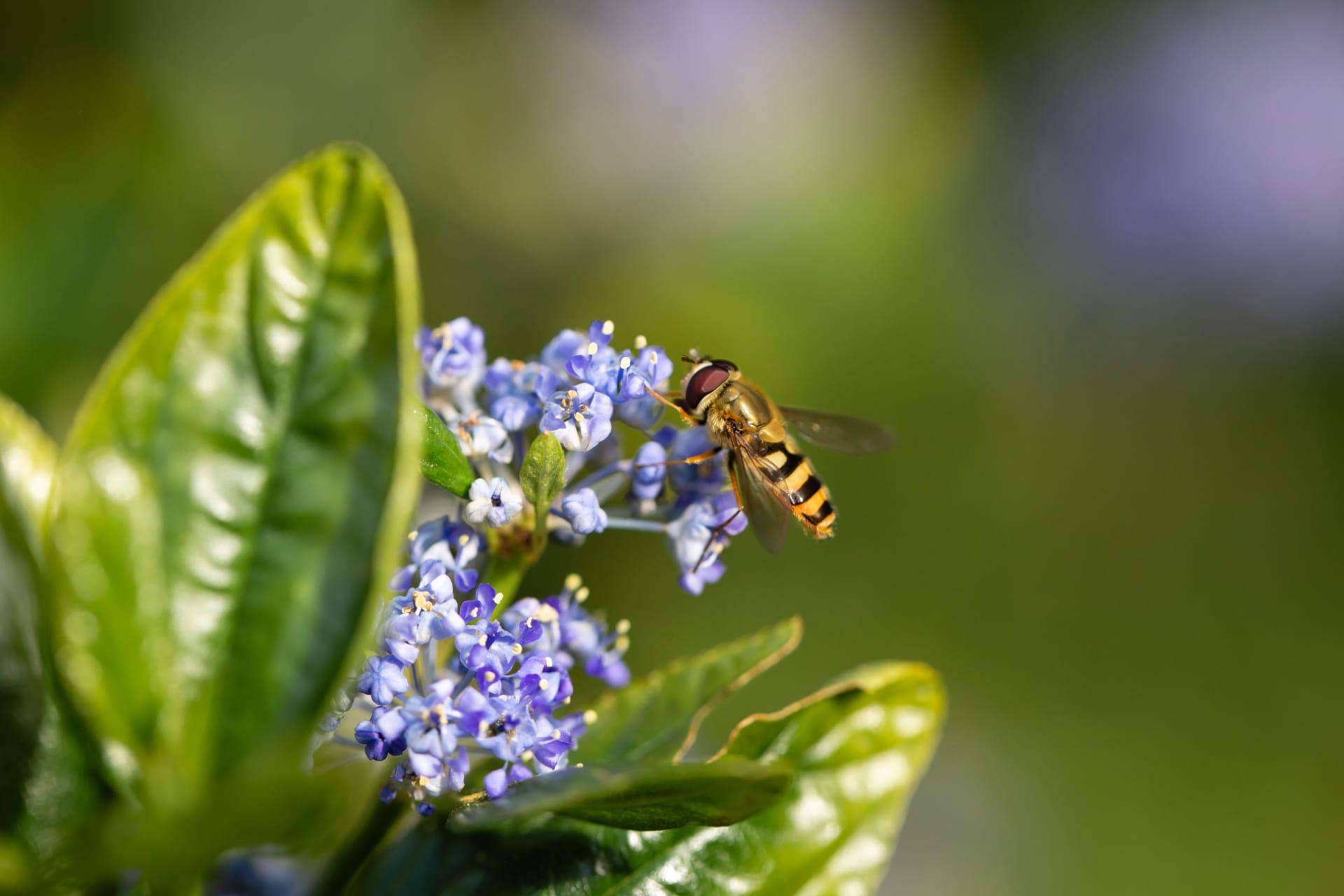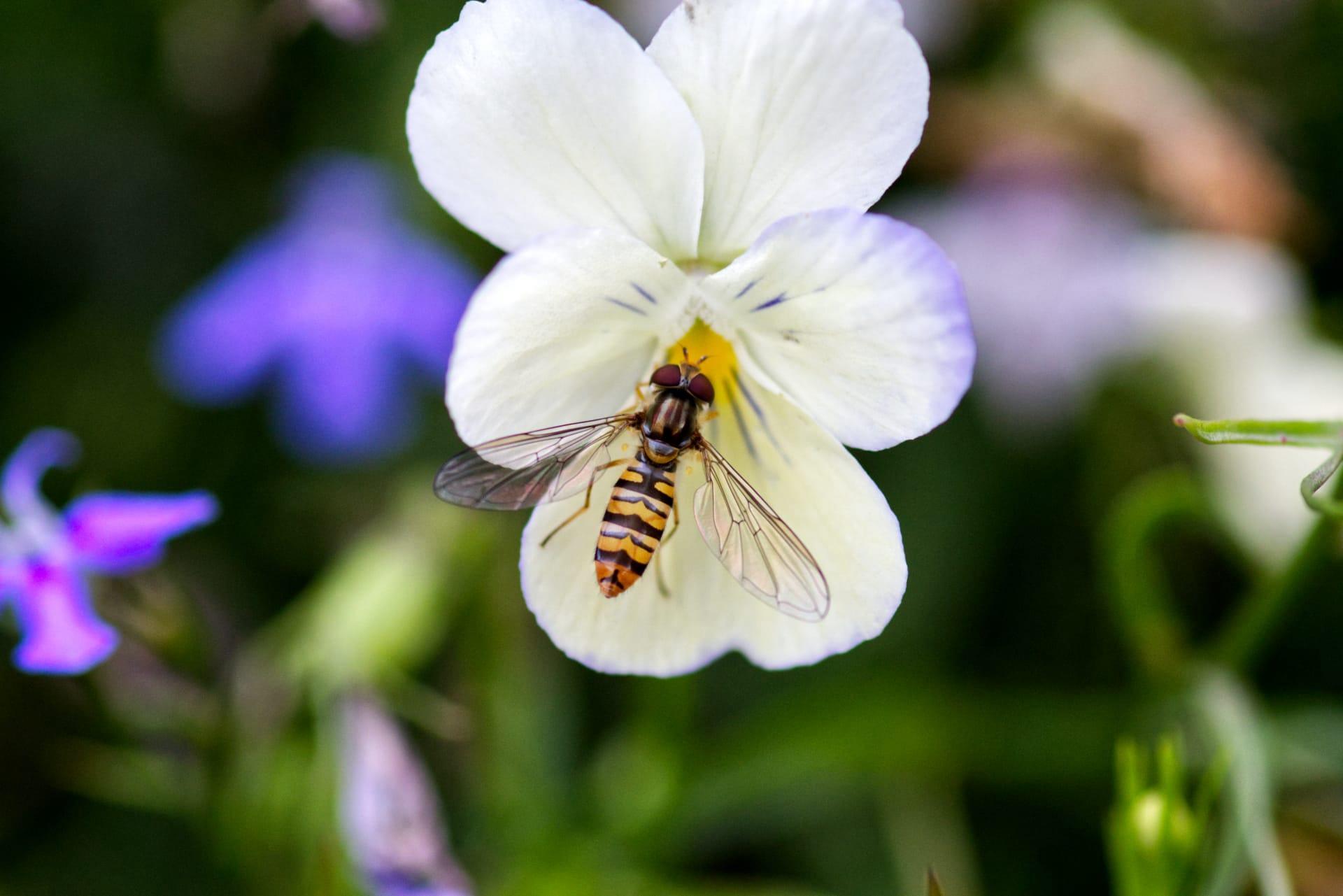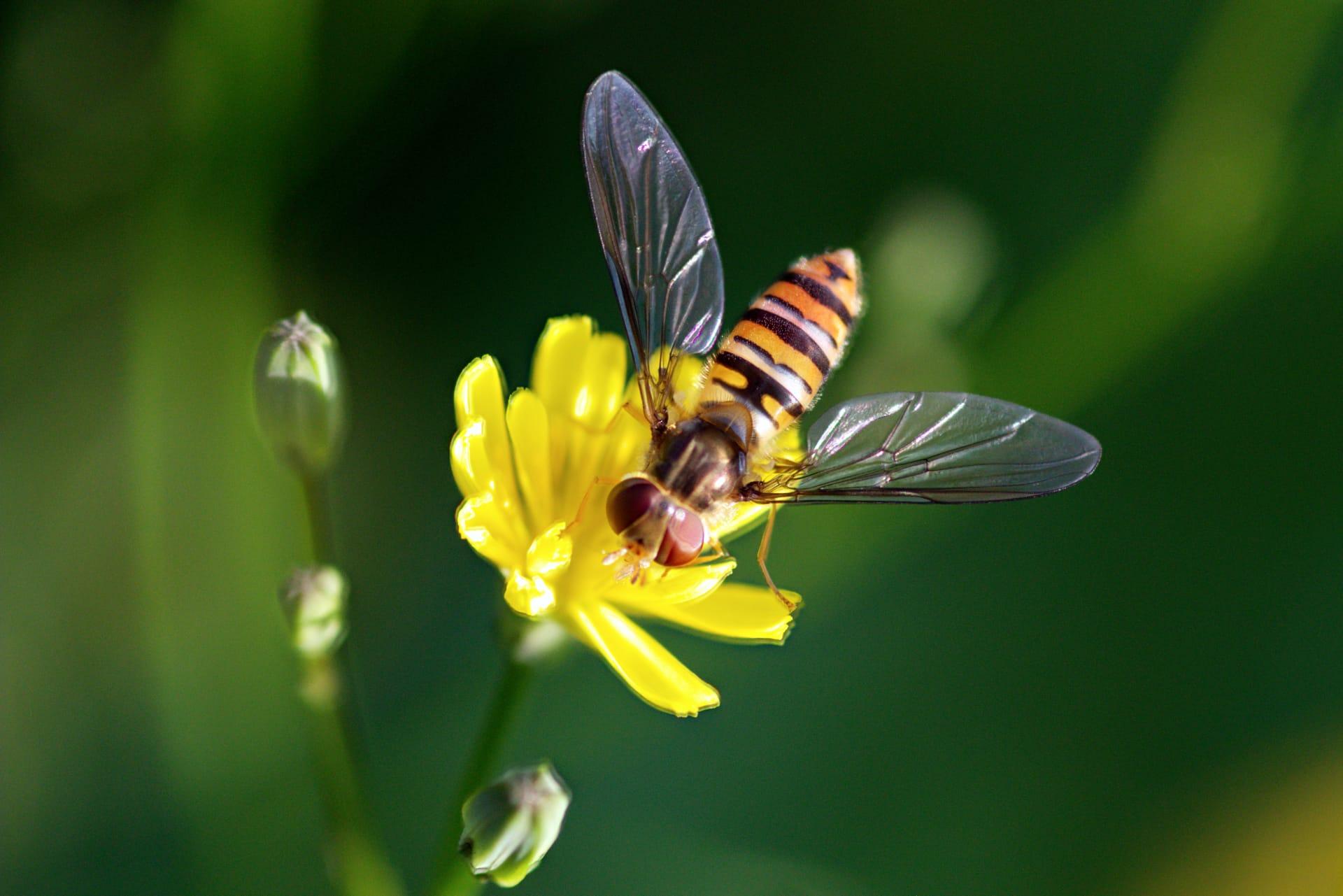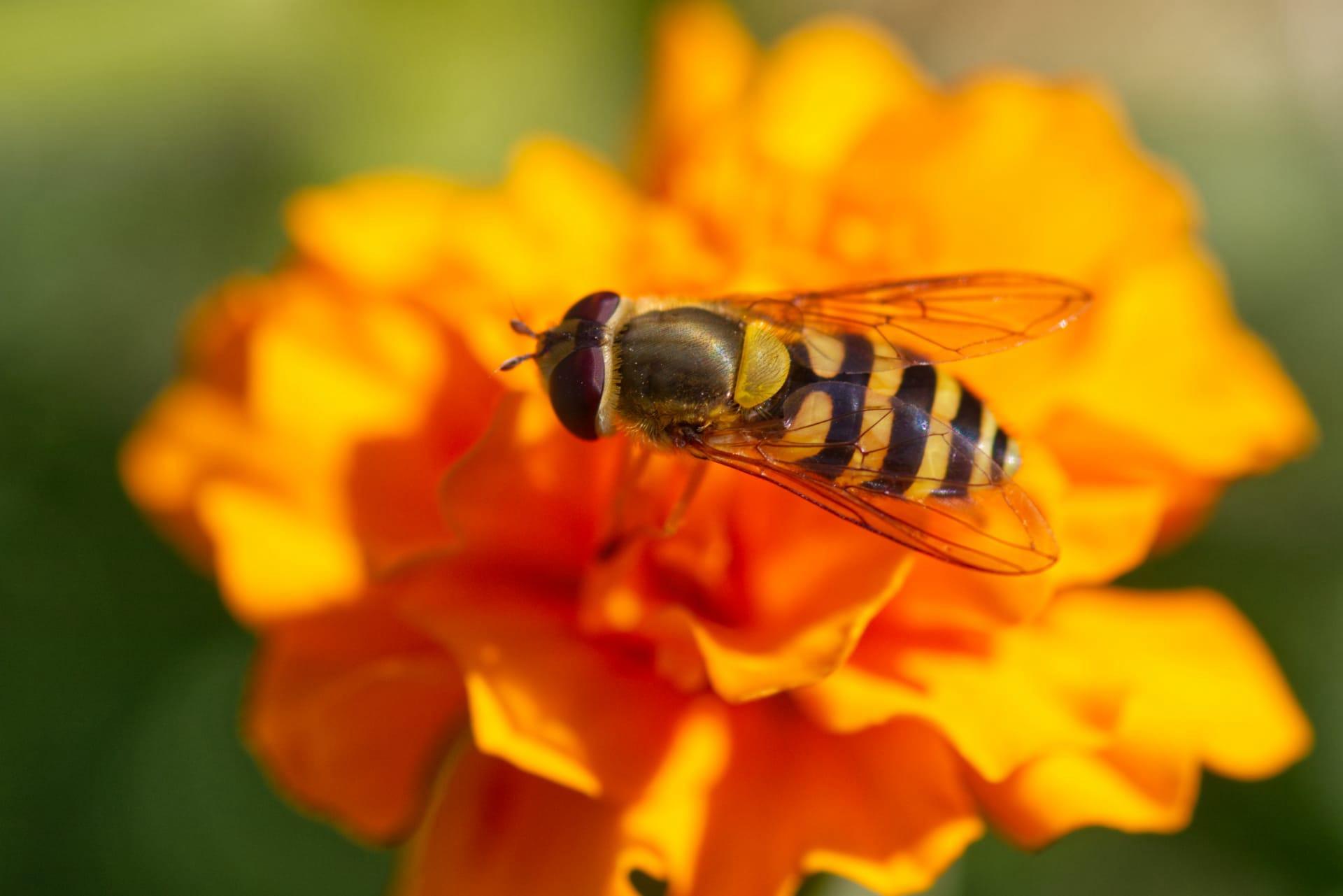Hoverfly
- Home /
- Mini Encyclopedia /
- Animal /
- Hoverfly
1
Hoverflies, scientifically known as Syrphidae, are a diverse family in the order Diptera, comprising over 6,000 species in 200 genera worldwide. They are characterized by their bright colors and distinctive markings, often mimicking bees or wasps. This mimicry serves as a defensive mechanism against predators. Morphologically, hoverflies can be recognized by their spurious vein, a vein-like feature in their wings, which is unique to their family. Their size can vary significantly, ranging from 3 to 15 millimeters in length.
Hoverflies are found globally, with a vast majority of species inhabiting the temperate regions of the Northern Hemisphere. Europe is particularly rich in hoverfly species, with over 900 species recorded. In North America, around 900 species have been identified. These insects are prevalent in various habitats, including gardens, meadows, forests, and even arid deserts. Their wide distribution is attributed to their adaptability and the varied ecological niches they occupy. Tropical regions also host hoverflies, but with less diversity compared to temperate zones.

2
Question: Are hoverflies dangerous or do they sting like the bees and wasps they mimic?
Answer: Despite their striking resemblance to bees and wasps, hoverflies are completely harmless to humans. They do not possess stingers and cannot bite. This remarkable mimicry is a classic example of Batesian mimicry, where a harmless species evolves to imitate the warning signals of a harmful species to deter predators. Hoverflies benefit from this as predators often avoid them, mistaking them for their sting-capable lookalikes. Additionally, they are not known to transmit diseases, making them safe and even beneficial visitors to gardens and natural spaces.

3
One of the key survival strategies of hoverflies is their remarkable flight abilities. They are known for their ability to hover in mid-air, dart quickly in various directions, and even fly backwards. This agility not only aids in evading predators but also plays a crucial role in their feeding and mating behaviors. Hoverflies primarily feed on nectar and pollen, and their flight skills allow them to access flowers with ease. Moreover, this agility is vital during mating, as males often engage in aerial displays to attract females.
Another survival strategy of hoverflies is their larval adaptation to various environments. The larvae of different hoverfly species have evolved to thrive in diverse habitats and conditions. For instance, some species have aquatic larvae that live in stagnant water, while others have terrestrial larvae known to feed on aphids, providing natural pest control. This diversity in larval adaptation not only ensures their survival in varying ecological conditions but also contributes to their widespread distribution.

4
In ecosystems, hoverflies play significant roles as pollinators and as biological control agents. Their visits to a wide variety of flowers for nectar and pollen make them important pollinators, particularly for certain plants that are less attractive to bees. Their role in pollination is crucial for the reproduction of these plants and maintaining biodiversity.
Additionally, hoverflies contribute to biological control, especially in agricultural settings. Many hoverfly larvae feed on common pests such as aphids, which can be detrimental to crops. By naturally controlling these pest populations, hoverflies help reduce the need for chemical pesticides, thus playing a vital role in sustainable agriculture and maintaining ecological balance.

5
Film: "Winged Mimics: The Hoverflies" is a British documentary released in 2020. It explores the fascinating world of hoverflies, focusing on their mimicry, ecological roles, and behavior. The film takes viewers across various landscapes in Europe, showcasing the diversity and adaptability of hoverflies in different environments.
Book: "Hoverflies of the British Isles" by Francis Gilbert and Steven Falk, published in the UK in 2018, is a comprehensive guide to hoverfly species found in Britain. It provides detailed descriptions, photographs, and distribution maps for over 280 species, making it an invaluable resource for entomologists and nature enthusiasts.
Book: "The Hoverfly Handbook" by Brian Eversham and Stuart Ball, published in the United States in 2021, offers an in-depth look into the life cycle, habitats, and identification of hoverflies. The authors blend scientific knowledge with practical tips for observing and studying these insects, making the book accessible to both academics and amateur naturalists.